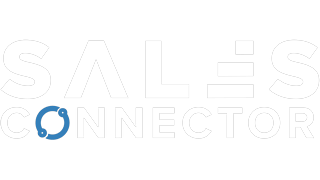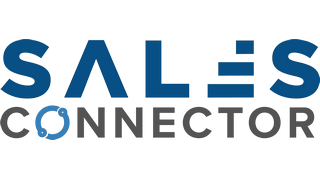Discover the formula for crafting presentations that are reliable every time you give them.
A Signature Presentation is a message that works for you no matter when, where or how you share it — speaking, in a webcast or webinar, facing one person across a desk or 100 people from a stage. This becomes the core of any and every presentation you deliver.
The following Speaker’s Formula™ organizes your presentation into 12 component parts, in a particular order.
1. Grab attention
When most people get up on stage, make a video or hold a webinar, they talk at people. That’s a pushing energy. It actually pushes people away. It’s better to draw them toward and into your presentation so they give you their attention and get interested in what you have to say. A compelling emotional or dramatic story can do this. This can tie to your reason for making your presentation and for being in the business or for selling the product you’re selling. A set of provocative questions is another approach. A set of specific, intriguing promises is yet another. One way or another, the first block of your presentation needs to be about getting and holding attention.
2. Build rapport
People buy from people they know, like and trust. People don’t just buy things from you; they have to buy you. An excellent way to build rapport is with personal transparency. You may choose to share your personal challenges, an obstacle you’ve overcome or doubts you conquered that got you to this moment of appearing before your audience and introducing them to your opportunity. It’s usually a mistake to barrel ahead with a presentation of facts, figures, product features and benefits, and propositions without first establishing some rapport with the audience.
3. Gain credibility
An audience needs some reassurance that you deserve being listened to. The same presentation gets very different results if delivered by two different people and only one gives reasons why he has the right to talk about the subject and to talk to the audience in front of him. Are you part of a respected group or association? Are you an author? Have you been seen in relevant publications? Have you been seen on TV or heard on radio? Are you just another cosmetic surgeon, or are you THE cosmetic surgeon who wrote The Official Consumer’s Guide to Cosmetic Surgery . . . who lectured at known hospitals . . . who has been a guest on a popular TV show . . . who is certified in the technique favored by major movie stars? In short, you need to lay out your claims to fame at this point in your presentation.
4. Target problems
Your audience entered the room, came to the webinar, started listening to your audio CD already in and with pain — if not physical, then in the broader sense: disappointment, frustration, recurring failure, anxiety, confusion. Everybody has something of this nature going on. For many people, it’s simmering — not acute or urgent. At this point in your presentation, you want to draw it out and state it, turn up its heat and make it acute and urgent. Relatively few people can be motivated by gain alone. Most move toward gain as a way of escaping pain.
5. Deliver solution
After you’ve dialed up the pain, it’s time to show the audience your solution. This may be your product or service, your diagnostic process, an appointment with you or exam by you or otherwise engaging with you. This point is fifth in the sequence because if you get to it too quickly, you haven’t laid the groundwork needed for your solution to be readily accepted. If you get to it too late, you may frustrate your audience. At this point, you want people to know you have a solution and to be excited about it without getting bogged down in its details.
6. Set expectations
An audience needs to know where they’re going with you. They don’t want to join you in your presentation without a good idea of the destination and the landmark points along the way. Any uncertainty raises anxiety. So you need to tell them what you’re going to tell them.
On a more sophisticated level, you want to try to direct and control their reactions to your presentation. This is sometimes called “framing” or “pre-framing.” By setting these expectations, you create an open loop in their minds, particularly in their subconscious minds. How they feel about and respond to what you say, do and ask of them during the rest of your presentation will loop back to what you told them to expect.
7. Social proof
When you present a product, service or just an idea, people have objections and doubts. Maybe, in their mind, they’re saying, “I don’t have time,” or “It won’t work for me.” They’re saying something, and it will likely be a reason not to go forward. The antidote is targeted social proof. You need to identify five to seven typical objections or doubts likely held by large percentages of your audience. Then find five to seven matching social proof stories, testimonials or fact-filled case histories. Each one erases one of the objections or doubts.
8. Show benefits
This is elementary, but it still needs to be said: People don’t buy a product to have the product or even because of its features. They don’t even buy the benefits of the product. They buy the benefits of the benefits. Nobody buys fast-drying paint because it dries fast, or even because of the benefit of that: less chances of it being touched, smudged, dirt falling onto it. They’re buying time and freedom (from drudgery). Virtually every presentation needs at least one slide that lists or depicts the benefits of the benefits.
9. Irresistible offer
Think about offers as “1 to 10.” One is basic, ordinary and/or unexciting. 10 is absolutely overpowering, “must have,” urgent and exciting. Think about the offer you’re going to make. Is it a one, a three, a five, a seven? It’s hard to get to 10 — to absolutely irresistible — but the closer you get, the better. A great presentation can fall flat and fail if it brings everybody to an unexciting offer.
10. No-risk guarantee
The number-one reason people don’t respond to the offer you make with your presentation is that they feel they were let down by somebody else. As you’re presenting, they’re remembering! A strong, simple, straightforward guarantee gives them needed reassurance that they can make a decision with you without getting burned.
You might ask: How long should a guarantee be? It doesn’t really matter. What matters is that you have an appropriate guarantee. If they can judge in seven days, then that’s fine. If they need a month, then a month is better. What’s most important is that you have a guarantee, period.
11. Give a deadline
The last thing you want is a presentation that lets the audience off the hook and lets them meander out of the room or exit your webinar to think things over. The whole point of doing powerful group presentations is efficiency. The last thing you want to wind up doing is chasing people who saw your presentation, by email, mail or phone. Your goal is to have a presentation that has people running — not walking — to the back of the room to buy or sign up for whatever next step is offered.
A lot of people will do this with now-or-never discounts. This can be effective, but I personally never like lowering prices because it’s what everybody does. Other techniques are fast-action bonuses, a limited bonus only for the first x-number or an impending event, like a fast-start class, breakfast, lunch or online session within hours or the very next day. In any case, the deadline itself must be very clear.
12. Call to action
I see so many people who seem afraid to make the call to action and tell people exactly what to do and to do it now. You need to be very direct about this. You can tell them to get up and go to the table at the back to schedule an appointment or quickly complete a form and buy the product. You can have forms handed out as you’re getting to this point in your presentation and tell them to fill them out and take them to back tables, “the folks in the red jackets at the doors,” or to bring them up to the front to you. If you’re delivering your presentation in a physical location, it’s a bad idea to send them to some location outside of that room and out of your sight. If you’re delivering a presentation online as a webinar or webcast, this step should be easy and seamless. Whatever they’re supposed to do as the response to your presentation, they should be told exactly what to do.
With a Signature Presentation built with this Formula, you really can sell anything.
This article originally appeared on Entrepreneur.



